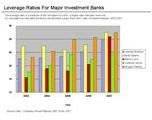Comprehensive Guide to Key Business Financial Statements
The Need to Perceive What’s Behind the High Dollar Values
Investors, business owners, suppliers, banks, lending institutions and even employees take interest in a business entity’s financial statement (FS). They rely on the information it presents as a means to gauge the overall ability and capability of a business organization to provide a stable and sustainable source of income.
However, not everyone fully understands why they are reading the reports. More often than not, the focus of appreciation is mainly on the high numbers of the dollar values presented. In fact, this misconception on how to evaluate financial data paved the way for the perpetuation of several white-collar crimes. Much of the investing public was misled by reports of high profits and substantial amounts of cash and asset balances without fully delving into their relationship with the other aspects presented by the FS.
Here we furnish concrete examples of how accounting manipulations distort financial statement information as well as details about several types of business irregularities:
-
Unraveling the Details of 10 High-Profile Accounting Scandals
-
What Are Accounting Audit Irregularities in Financial Statement Fraud?
Laws Enacted to Counter Financial Misrepresentations

In connection with the many business irregularities that undermined the integrity of the financial statements, several laws were enacted by Congress to serve as preventive or counter measures against financial report manipulations.
The impact of these frauds affected first and foremost the investors and the employees. Thus, in order to protect these sectors, laws governing FS presentations were implemented. This included the establishment of the Securities and Exchange Commission (SEC) to serve as the government’s arm in reviewing and evaluating the reports submitted by publicly traded companies.
Find more information from these articles:
Acquiring Knowledge on How to Dig Deeper
Financial managers and analysts are savvier, since they know there is more to a statement than meets the eye. They pore over the numbers and extract information beyond their surface presentations.
What kind of information do these professionals look for in financial reports? What type of data do these statements provide, if one aims to have a sound basis for making decisions or for arriving at reasonable conclusions?
First, readers should know that under GAAP rules, a set of financial statements should include: (1) a balance sheet, (2) an income statement, (3) a statement of owner’s capital or statement of retained earnings, and (4) a cash-flow statement.
The following articles are a comprehensive guide to key business financial statements as a way of getting insight about the types of financial information furnished by each of the required statements:
-
What’s the Difference Between Income Statement vs. Balance Sheet?
-
Statement of Booked Earnings (Retained Earnings) , Explained in a Nutshell
Analyze the Data Gathered
Data gathering is the initial step. The next phase is to analyze the financial information not just for its value but also on how such value affects other accounts.

During board meetings or business performance deliberations, financial statements are often presented to board members and business owners in different formats. This allows for a comparative presentation of accounts and their dollar amounts for the purposes of analysis. Such presentations enable the board members or owners to follow easily the related discussions and deliberations.
A reader might find it difficult to comprehend or perform his or her own analysis tasks if he or she has only vague ideas about the significance of these formats. The best way to enhance one’s knowledge is to study examples of how they are being utilized in evaluating the contents of the financial reports. Gain knowledge from the following articles, which provide examples of how collected data is analyzed by using different formats.
-
Deciphering the Meaning of Financial Data via Horizontal and Vertical FS
-
Two Ways to Analyze Business Financials: Comparative and Common-Size
Data Analysis Using Accounting Ratios

It can be noted that the different forms of FS presentations include percentages. These denote the proportions of how much a particular item increased or decreased in comparison to the previous years’ data. However, the task of evaluating the FS doesn’t stop at determining the increase or decrease. The process continues by delving deeper into the underlying reasons for the changes.
This is where ratio analysis is used as an effective tool for ascertaining if the results are indicative of improved liquidity, efficiency, productivity or long-term sustainability, or the opposite. Study the following articles that furnish overviews on how these ratios are interpreted and subsequently used to make informed decisions.
Understanding FS Preparation
In order to fully grasp the significance of the key business financial statements, readers or learners should extend their learning by understanding how these statements are prepared. Doing so provides them with in-depth knowledge of a statement’s composition. Study the following useful resources that provide information about the fundamental concepts in preparing each type of FS:
-
Accrued Expense Standards: Examples, Provisions and Contingencies
-
Know the Basic Balance Sheet Format by Knowing the Fundamental Accounting Equation
References for Accounting Terminologies:
Readers or learners who are not familiar with accounting terminologies can make use of glossaries that are specifically dedicated to a particular type of statement or function. To complete this comprehensive guide to key business financial statements, the following glossaries would best suit one’s need for a vocabulary reference presented according to its corresponding accounting discipline:
Laws and regulatory rules have been implemented to provide protection against unscrupulous individuals and their misrepresentations by way of fraudulent business reports. Yet, it is also important that the FS users are equipped with the basic knowledge about the impact and significance of financial data. That way, a more discerning approach would be assumed if one wishes to assess a business entity’s representation based on financial statements.
References
- Image: A bag of money, US dollars, spinning in a vortex of color, representing chicanery or misrepresentation of cost or economic information or data, but could represent outright financial fraud by Barbara Lock under CCO 1.0 Universal Public Domain
- Image: Leverage ratios of investment banks by Farcaster under CCA-SA 3.0
- Image: Downloadable Horizontal Balance Sheet created by the author for the article “How to Perform a Financial Statement Analysis.”
- Image: US-SecuritiesAndExchangeCommission-Seal by A work of the United States Federal Government under public domain.
